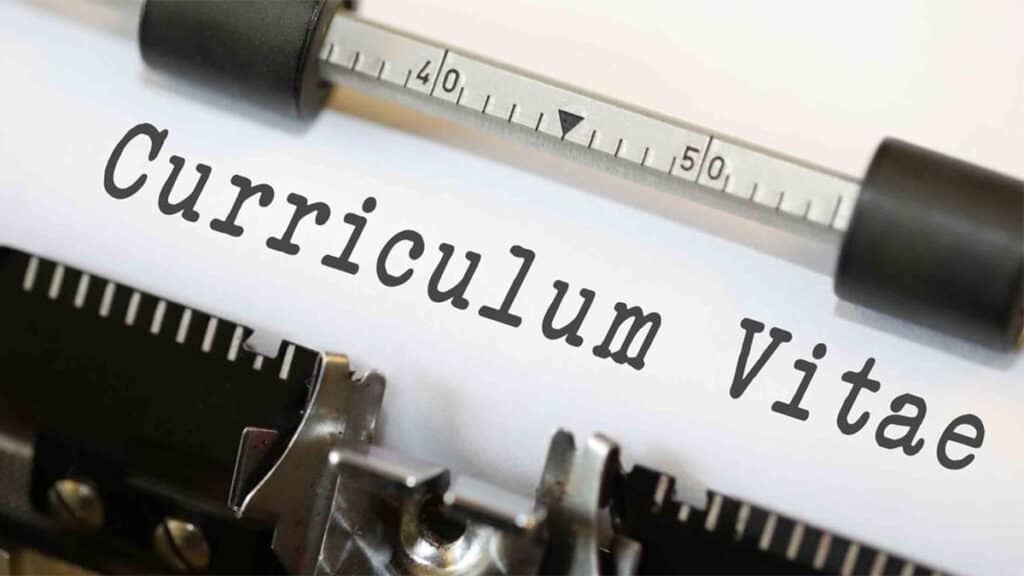Publishing a fake paper in a predatory, scientific journal appears to be relatively easy. The example we focus on in this article shows just how easy.
We have published several articles on sting operations against predatory publishers, but we make no apology for highlighting another one. Indeed, we will continue to highlight them whenever we find them.
In April 2020, Bradley Allf published a paper in “US-China Education Review A.” The paper, entitled “Experiential Learning in Secondary Education Chemistry Courses: A Significant Life Experiences Framework” was totally fake, including authors on the paper being characters from the TV series Breaking Bad and the paper loosely following the Breaking Bad story line.
In this article we primarily focus on the journal and the publisher. We do this as the story behind the paper has already been covered in another article by the author himself.
We are keen to look at the type of journal that publishes a fake scientific paper so that other researchers might be able to draw on some of our insights to decide if a journal is predatory, or perhaps, when planning their own sting operation to expose a predatory journal.
TEDx Talk by Bradley Allf
Since writing this article, we are delighted that Bradley Allf has done a TEDx talk on the paper that we discuss in this article. It’s a great watch and we would encourage you to take a look.
The fake paper
The fake paper was published in “US-China Education Review A.” The full citation of the article is:
Allf B.C., Pinkman J.B. and White W.H. (2020) Experiential Learning in Secondary Education Chemistry Courses: A Significant Life Experiences Framework. US-China Education Review A 10(4):158-164. DOI: 10.17265/2161-623X/2020.04.002
In the rest of this section, we look at some aspects of the paper that we found interesting, if not amusing.
The article’s home page
Figure 1 shows the page that is displayed, when you follow the DOI link.
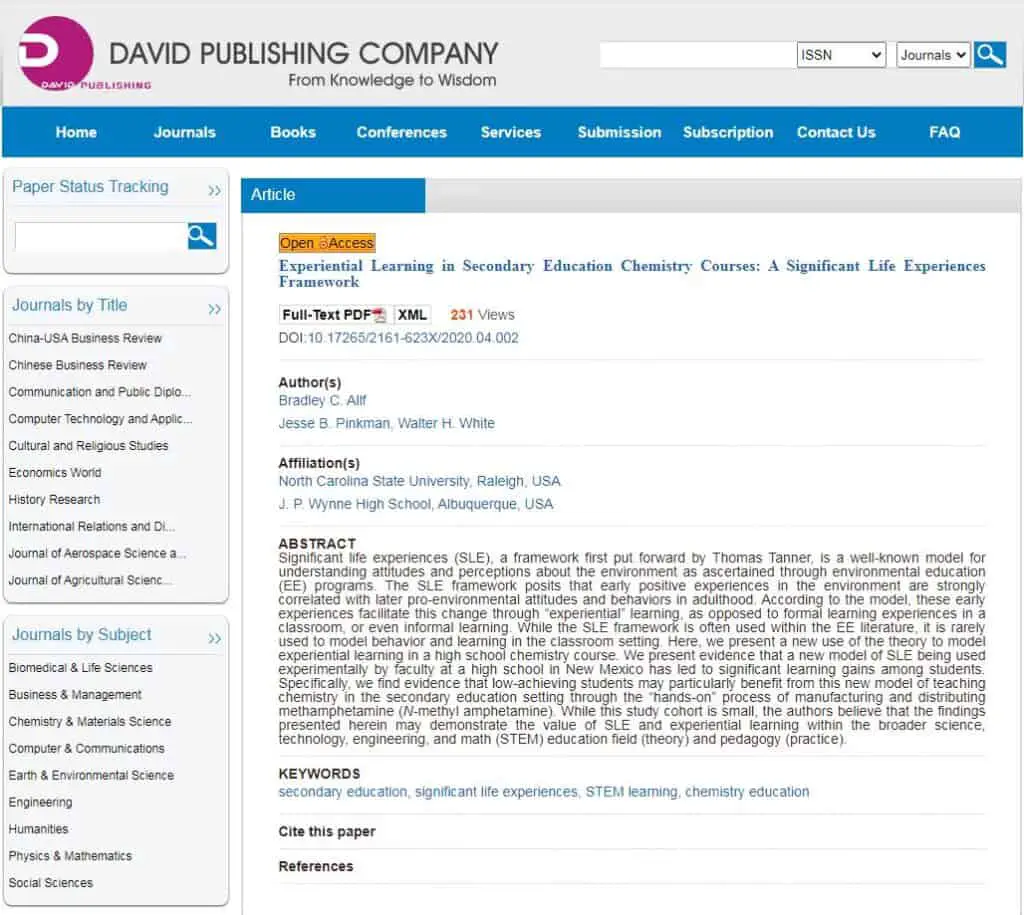
We make the following comments on this web page:
- It is interesting that the journal title is not displayed anywhere on the page.
- The “Cite this paper” section is not a live link, so we are unable to retrieve an example of how the paper should be cited.
- The “References” is not a live link. You need to access the paper to look at the references. This is actually not too much of a hindrance as the paper is open access and we only make the point to highlight the shortcomings of the web site.
- Indeed, none of the links on this page are live, including the DOI and the keywords.
The paper’s authors
Many fake papers that are published often have a comedic element to them. We still smile when we think about some of the author names and paper titles that we reported in “Journal publishes a spoof Covid-19 paper“, with regard to their papers that they cited, which were figments of the author’s very active imagination.
For the paper that is the focus of this article, we find it very amusing that the authors, in addition to Bradley Allf, are Jesse B. Pinkman and Walter H. White.

Jesse Pinkman and Walter White are the two main characters in the TV series Breaking Bad. We hope that Bryan Lee Cranston and Aaron Paul Sturtevant (the actors real names) are impressed that their characters were able to publish a peer reviewed, scientific paper, which is based on the story line of the hit TV series.
Pinkman’s and White’s affiliation is given as “J. P. Wynne High School, Albuquerque, USA“, which is the fictional school from the TV series.
The paper’s “storyline”
For those of you not familiar with the story line of Breaking Bad, it is essentially about a high school chemistry teacher (Walter White) who starts producing drugs to support his family after being diagnosed with terminal cancer. He teams up with his former student (Jesse Pinkman) and they soon become major players in the drugs market due to the high quality drugs that they produce.
The fake paper, as well as having the main characters from Breaking Bad as authors, also draw on the underlying premise of the TV series in the preparation of the paper.
One of the quotes we like from the paper is:
“a largely insignificant aside: the new teaching style was not actually employed in these courses, and was instead taught in an one-on-one basis with a single student, already graduated from the school: JBP; as another insignificant, almost unnecessary-to-state aside, White soon left his post at Wynne HS to pursue his drastic new instructional techniques in a “freelance” capacity.”
This just about sums up one of the main story lines of the Breaking Bad series, or at least explains how the two main characters came to be working together.
There is also “nonsense” in the paper, such as stating that “Albuquerque is part of the Galapagos Islands.” It then goes on to give various geological details, which have no relevance to the main content of the paper. The section in question concludes “The first fossil evidence of humans in Albuquerque is from approximately 109 years ago.” If these are not red flags to any sensible review process, we are not sure what is?
We recommend that you take a look at the paper, especially if you are aware of the plot line of Breaking Bad. You will appreciate the subtleties (perhaps not so subtle) hidden within the paper.
Review and publication timescales
When we look at papers from predatory journals, we are always interested in the times scales. That is, how long did it take to get the first review back and then how long did it take before the paper was published.
We are also interested in the reviewers comments.
It would also be interesting to see the email that was the catalyst for the paper. In his article describing his experiences of why he submitted the article, the authors says:
“I received a strange email from a pair of academic journals inviting me to submit my research to one of their latest issues.“
It would be interesting to see this strange email. If nothing else we could include it in our database of strange things said in emails from predatory journals.
Unfortunately, none of this information is available but, if the author is willing to share this, we would be very interested to see it.
The Journal
It is always interesting to take a look at the journal in cases such as this, just to see if we can establish if the journal is legitimate, or not. In this section we take a look at some features of the journal. If you think we have missed anything, let us know and we will update this article.
US-China Education Review A
The paper was published in “US-China Education Review A“. This journal is published by the “David Publishing Company” (we look at the publisher below).
Just for the sake of record, we have captured the journal’s home page (accessed 28 Nov 2020). We have not put the image on this web site, as it only has limited appeal, but it is available to those that want to view it.
We also note that, in addition to the journal in question (US-China Education Review A), there is also another journal (US-China Education Review B). We have also captured the home page of this journal.
US-China Education Review A: Indexing
Figure 3 shows the indexing page of the journal.
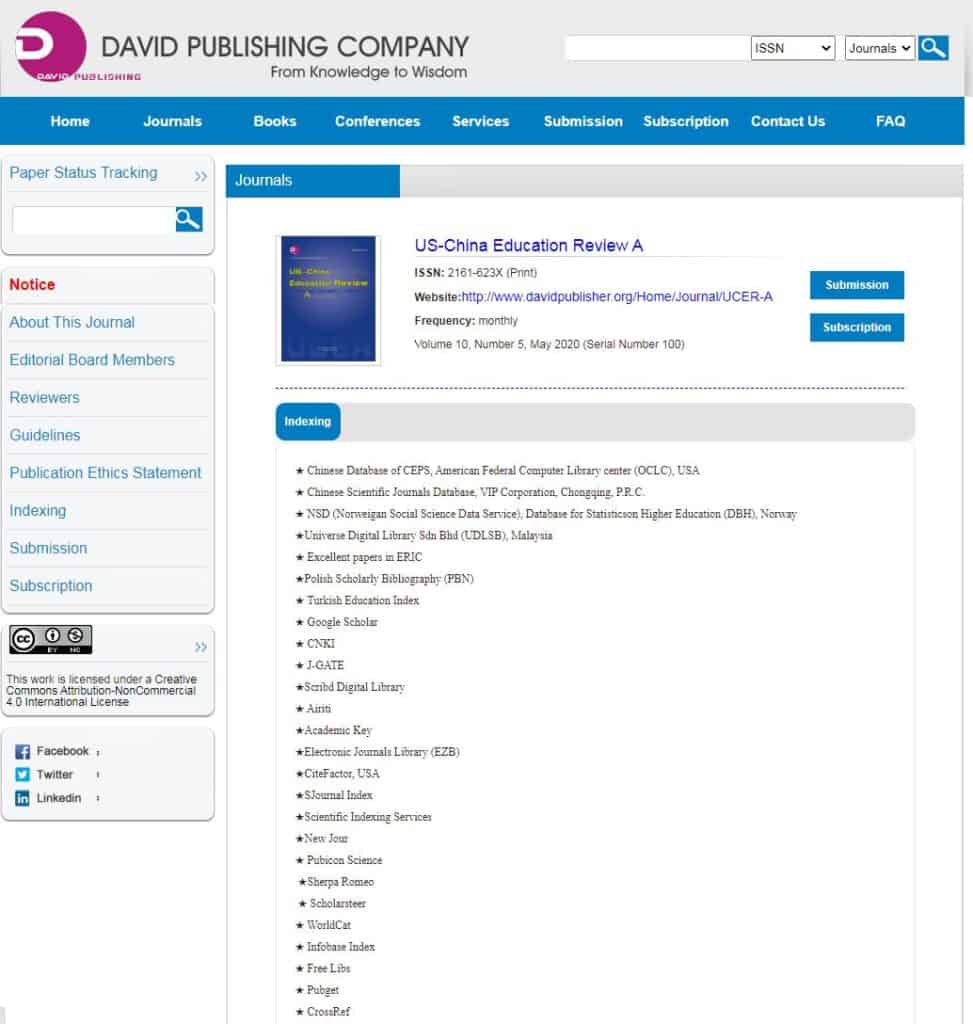
We note that many of them are not really indexing services, in that they are no mark of quality. For example, listing Google Scholar, Scribd and Sherpa Romeo, although very worthwhile organisations, do not give any guarantee of quality. It is probably not wrong to use the term “indexing” but in the context of an academic journal this term is usually associated with services such as Thomson Reuters and Scopus and the term, to the unwary, would suggest that being indexed by an organisation is somehow a validation of the quality of the journal.
Others are misleading. For example, there is an entry that says “SJournal Index“. There is no link associated with this entry (any of them actually) so if you carry out a Google Search, the top entry is ‘Scientific Journal Rankings – SJR” (see figure 4).
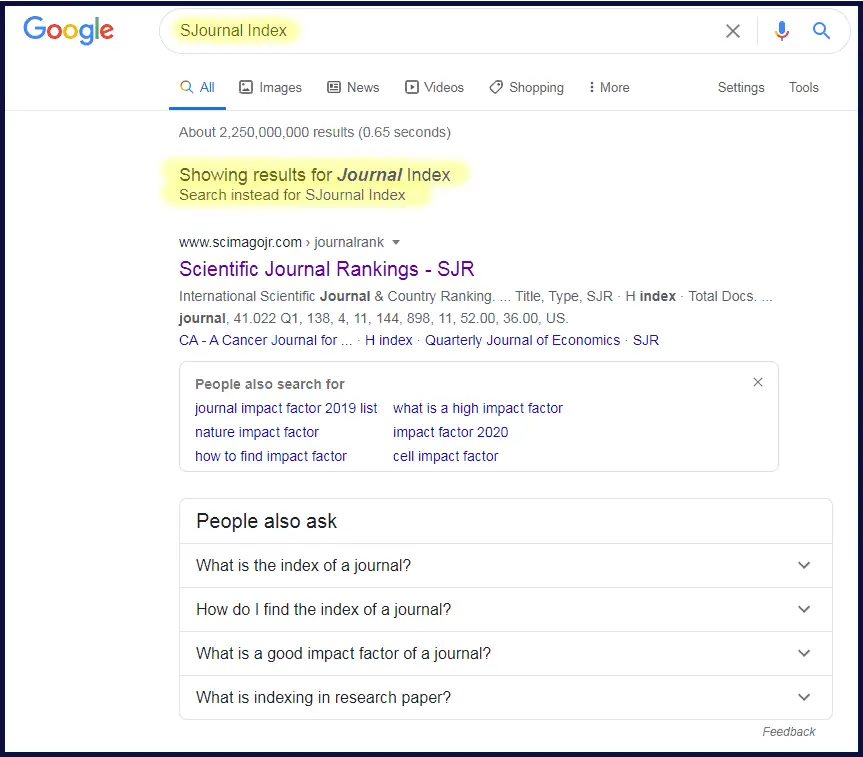
If the journal is registered with Scimago, this would be an indicator of quality.
However:
- Note that the search that was returned is actually for “Journal Index“, not “SJournal Index“.
- If you click on the link to search instead for “SJournal Index“, this returns results which point back to David Publishing (see Figure 5). This is a worry and suggests that David Publishing is using “SJournal index” so that, if it is searched, it gives the impression that the journal is recognized by Scimago.
- Just to be be certain, we searched the Scimago database, and the journal was not found (the screen shot is here, accessed 28 Nov 2020).
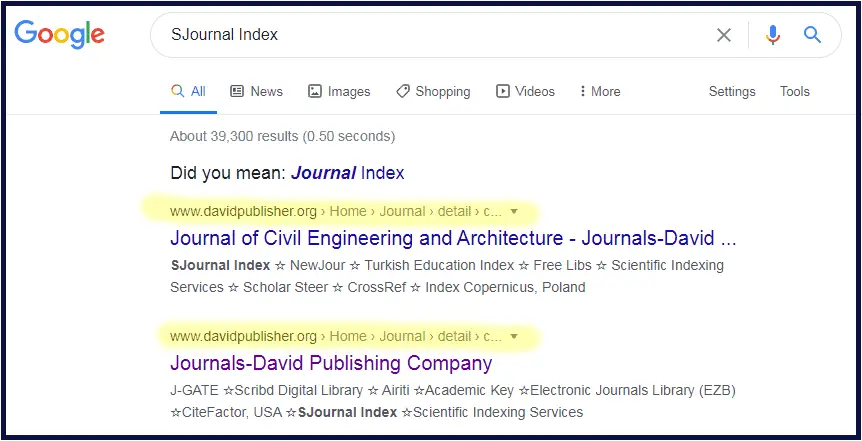
We mentioned above that none of the indexing items are live links. We wanted to say a few more words on this point. If the journal wanted to be transparent, then it should provide a link so that the reader can easily validate what the journal is saying, as well as saving the reader the bother of having to carry out the search for themselves and, perhaps, having to interpret the results.
To show how easy this is, we searched a few of the indexing terms and have provided live links in the list below.
Some of them were not valid. For example, Electronic Journals Library (EZB) does not recognize the journal (see the screen shot here).
We also looked at Scribd and could find articles for 2013, but struggled to find other years.
Social Media
Looking at Figure 3, there are some social media platforms mentioned at the bottom left of the home page. We just note that none of these links are active.
We searched some social media platforms but we were unable to find any mention of the journal.
Memberships of DOAJ and COPE
Whenever we are looking at an open access journal, we always check whether they are a member of DOAJ (Directory of Open Access Journals) and COPE (Committee of Publication Ethics).
The US-China Education Review A is not a member of DOAJ or COPE.
This is not necessarily a bad thing, but if a journal is a member of DOAJ and/or COPE it can be seen as a positive, but not being a member is not always a negative, but it just gives another piece of the jigsaw and can inform the conclusion we reach about the journal.
Article Processing Charges
We looked for the article processing charges (APC) but struggled to find anything. However, if you look at Figure 6, you will see that the journal has a subscription link (highlighted in yellow). Clicking that that, leads to a page which lists all the journals, giving the “Print” price. We have extracted the part for US-China Education Review A, (shows in the red ellipse) which shows that the price is $600.
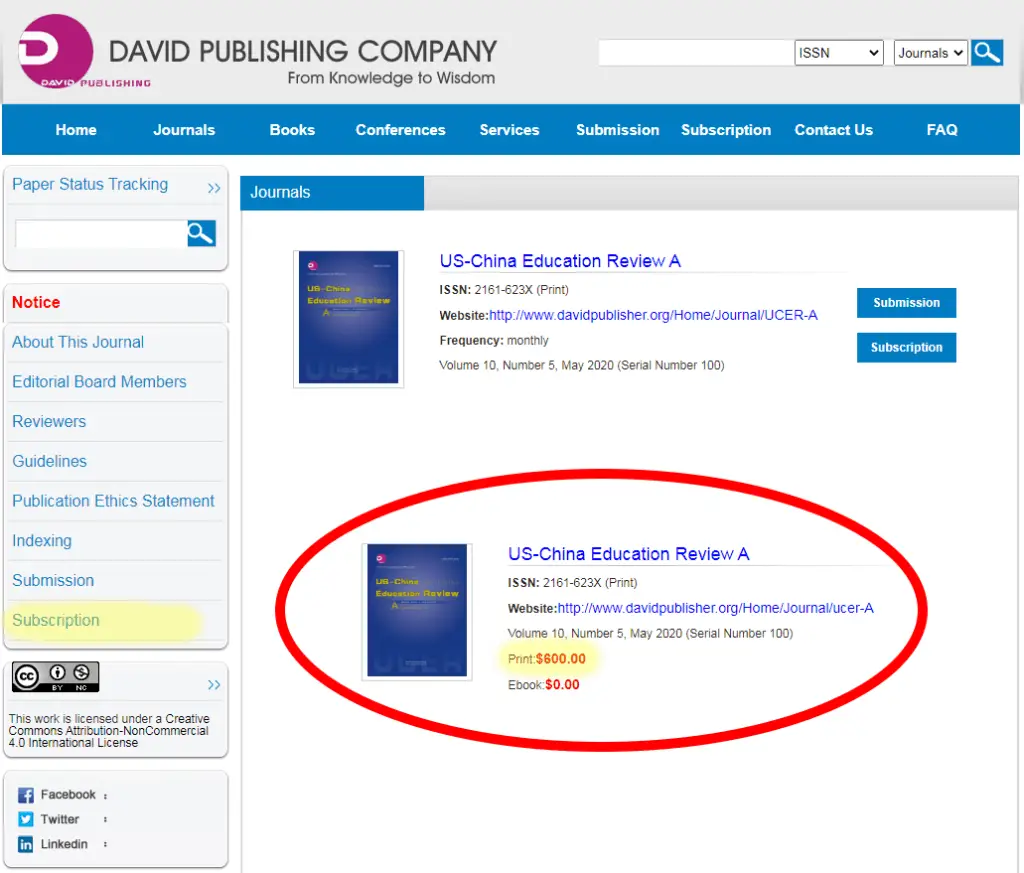
This is of the same magnitude that the author reported they were asked to pay. The author was asked to pay $520, which many other journals in the David Publishing Company portfolio, state as the price. It looks like that they have recently increased the price for this journal.
So, although it is listed as a subscription cost, it looks as if this is a APC. This might simply be a mistake but it could be done on purpose to make any authors believe that this is a subscription based journal, rather than an open access journal. It is only when they receive an invoice does it become clear.
David Publishing Company
US-China Education Review A is published by the David Publishing Company.
We thought that we would just take a quick look at the publisher, just so that we have it on record, at this point in time (28 Nov 2020).
David Publishing Company: Journals
Table 1 shows the full list of 52 journals that we found on the David Publishing Company web site (accessed on 28 Nov 2020)
| Title | ISSN | Link |
| China-USA Business Review | 1537-1514 | Home Page |
| Chinese Business Review | 1537-1506 | Home Page |
| Communication and Public Diplomacy | 2578-4277 | Home Page |
| Computer Technology and Application | 1934-7332 | Home Page |
| Cultural and Religious Studies | 2328-2177 | Home Page |
| Economics World | 2328-7144 | Home Page |
| History Research | 2159-550X | Home Page |
| International Relations and Diplomacy | 2328-2134 | Home Page |
| Journal of Aerospace Science and Technology | 2332-8258 | Home Page |
| Journal of Agricultural Science and Technology A | 2161-6256 | Home Page |
| Journal of Agricultural Science and Technology B | 2161-6264 | Home Page |
| Journal of Chemistry and Chemical Engineering | 1934-7375 | Home Page |
| Journal of Civil Engineering and Architecture | 1934-7359 | Home Page |
| Journal of Communication and Computer | 1548-7709 | Home Page |
| Journal of Control Science and Engineering | 2328-2231 | Home Page |
| Journal of Earth Science and Engineering | 2159-581X | Home Page |
| Journal of Electrical Engineering | 2328-2223 | Home Page |
| Journal of Energy and Power Engineering | 1934-8975 | Home Page |
| Journal of Environmental Science and Engineering A | 2162-5298 | Home Page |
| Journal of Environmental Science and Engineering B | 2162-5263 | Home Page |
| Journal of Food Science and Engineering | 2159-5828 | Home Page |
| Journal of Geodesy and Geomatics Engineering | 2332-8223 | Home Page |
| Journal of Geological Resource and Engineering | 2328-2193 | Home Page |
| Journal of Health Science | 2328-7136 | Home Page |
| Journal of Hydraulic Engineering | 2332-8215 | Home Page |
| Journal of Life Sciences | 1934-7391 | Home Page |
| Journal of Literary Anthropology | 2687-8232 | Home Page |
| Journal of Literature and Art Studies | 2159-5836 | Home Page |
| Journal of Materials Science and Engineering A | 2161-6213 | Home Page |
| Journal of Materials Science and Engineering B | 2161-6221 | Home Page |
| Journal of Mathematics and System Science | 2159-5291 | Home Page |
| Journal of Mechanics Engineering and Automation | 2159-5275 | Home Page |
| Journal of Modern Accounting and Auditing | 1548-6583 | Home Page |
| Journal of Pharmacy and Pharmacology | 2328-2150 | Home Page |
| Journal of Physical Science and Application | 2159-5348 | Home Page |
| Journal of Shipping and Ocean Engineering | 2159-5879 | Home Page |
| Journal of Sports Science | 2332-7839 | Home Page |
| Journal of Statistical Science and Application | 2328-224X | Home Page |
| Journal of Tourism and Hospitality Management | 2328-2169 | Home Page |
| Journal of Traffic and Transportation Engineering | 2328-2142 | Home Page |
| Journal of US-China Medical Science | 1548-6648 | Home Page |
| Journal of US-China Public Administration | 1548-6591 | Home Page |
| Journalism and Mass Communication | 2160-6579 | Home Page |
| Management Studies | 2328-2185 | Home Page |
| Philosophy Study | 2159-5313 | Home Page |
| Psychology Research | 2159-5542 | Home Page |
| Sino-US English Teaching | 1539-8072 | Home Page |
| Sociology Study | 2159-5526 | Home Page |
| US-China Education Review A | 2161-623X | Home Page |
| US-China Education Review B | 2161-6248 | Home Page |
| US-China Foreign Language | 1539-8080 | Home Page |
| US-China Law Review | 1548-6605 | Home Page |
We have not looked at any of these journals, but we have added the David Publishing Company to our list of publishers that we believe require further investigation.
Read more
The author, Bradley Allf, has written an article about his experiences in writing and publishing this article. A lot of the material we report above is drawn from Bradley’s article but it is still worth a read, as it contains many more details than we have included here, as it is pointless us repeating the same information.
Conclusion
At the time of writing (29 Nov 2020), the article was still available on the journal’s web site. You can access it via it DOI, 10.17265/2161-623X/2020.04.002. But, if the article is removed, we have archived a copy here.
From the experiences reported in this article, we would suggest that you avoid submitting articles to US-China Education Review A. Indeed, we would avoid the journals in the David Publishing Company portfolio.
If you believe that you would like to submit to this journal, or another journal from this publisher’s stable, please carry out your own due diligence and, remember, there are plenty of journals to choose from so if you have any doubts just move onto the next one.
You might also be interested in …
- Journal publishes a spoof Covid-19 paper
- Sting operations in predatory publishing
- Get me off Your Fucking Mailing List
Acknowledgements
- Breaking Bad image #1: From www.hdwallpapers.net/tv-and-movies, CC BY-SA 3.0
- Breaking Bad image #2: From www.hdwallpapers.net/tv-and-movies, CC BY-SA 3.0 (we have incorporated this image into a shark’s jaw to create the header image)
- Shark’s Jaw: https://www.pxfuel.com/en/free-photo-omgan
Please consider supporting us by becoming a patron

Thank you for reading this article. If you would like to support the work we do, please consider becoming one of our patrons.
With your support, it will enable us to deploy some of the ideas that we have, and will also enable us to work more closely together. As an example, we will look at journals and/or publishers that you propose. You can read more here.


